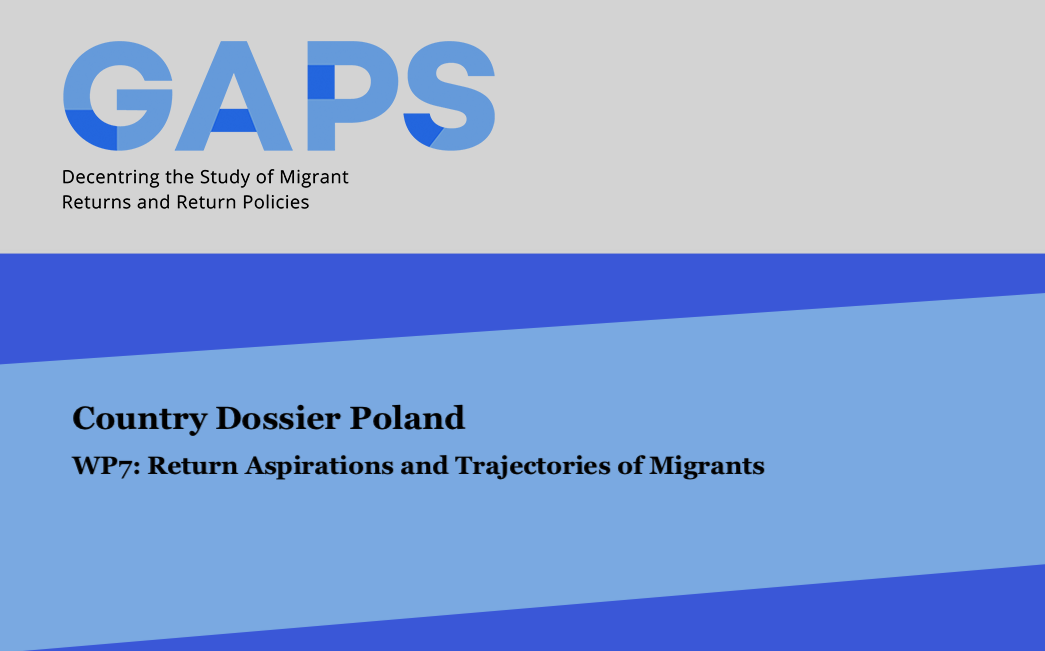Country Dossier Poland WP7: Return Aspirations and Trajectories of Migrants
Executive Summary:
The report presents findings on migration trajectories of various categories of migrants in Poland. The research focused on return as a result of a given person’s experience and aspirations. The primary data were obtained through qualitative analysis of 31 individual in-depth interviews with migrants. The study draws on a critical approach to migration, assuming a continuum of coercion in different types of returns. It assumes that coercion varies depending on the personal situation of each migrant and the way state institutions apply policy. It is not necessarily reflected straightforwardly by the name of a legal category of return, such as ‘voluntary’ returns. The report starts with laying down the context of migration to Poland in terms of policies and their application.
The people interviewed for the study belonged to various, sometimes overlapping groups:
· migrants at risk of return, including irregular migrants (e.g., those with a expired stay permit),
· individuals who experienced pushbacks at the border with Belarus,
· migrants who were denied entry or rejected for asylum in the EU,
· migrants with removal orders, those briefly detained, and returnees who re-entered Poland,
· migrants returning from or to Poland within the Dublin procedures,
· voluntary returnees (as classified by IOM) to highlight the complexities beyond the forced/voluntary binary.
In the report, four categories of trajectories are identified and developed, taking into account agency in the very act of migration, the experience of integration, and the plans and aspirations concerning return or further mobility. The following categories are differentiated: ‘planning settlers’, ‘planning nomads’, ‘spontaneous settlers’, and ‘spontaneous nomads’. In conclusion, the report underlines that migrants exercise their agency even in situations usually perceived as ‘forced migration’, and this agency should be recognised and adequately depicted. Moreover, eleven policy recommendations are proposed.
Please find the entire DOI report by clicking the button below:

